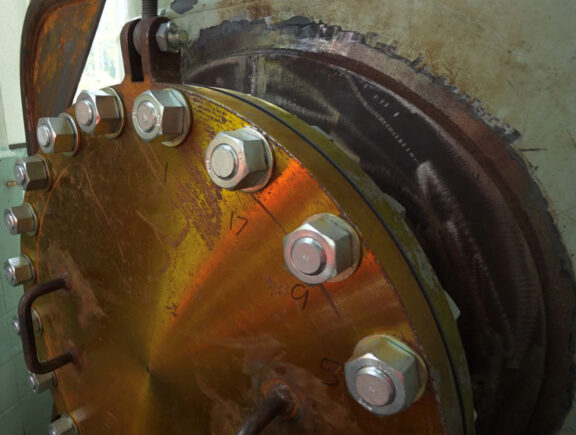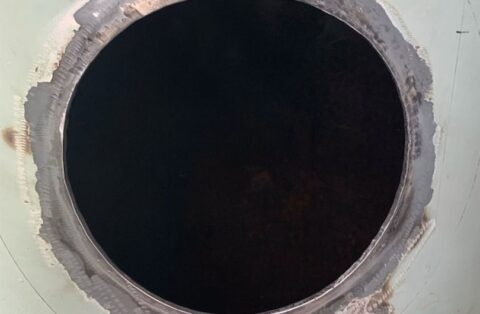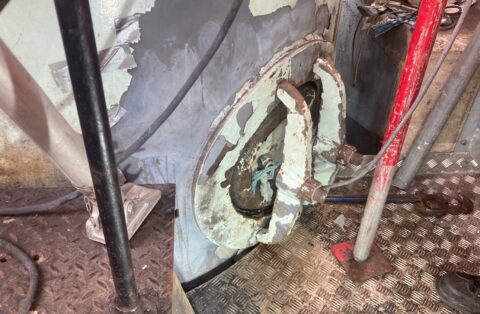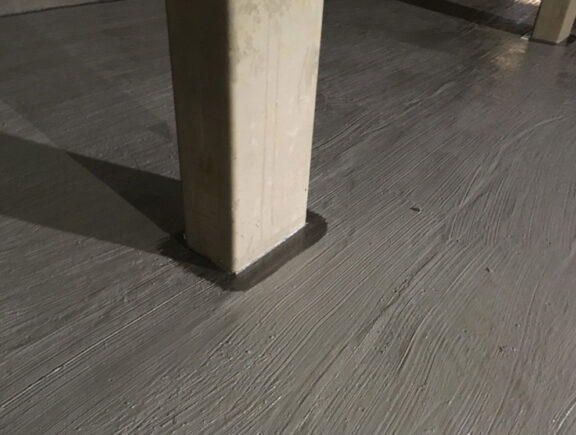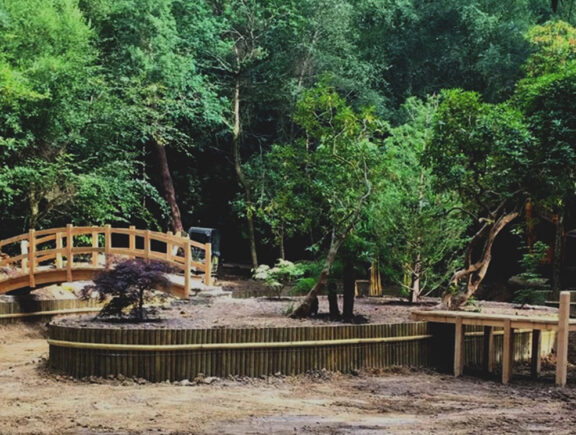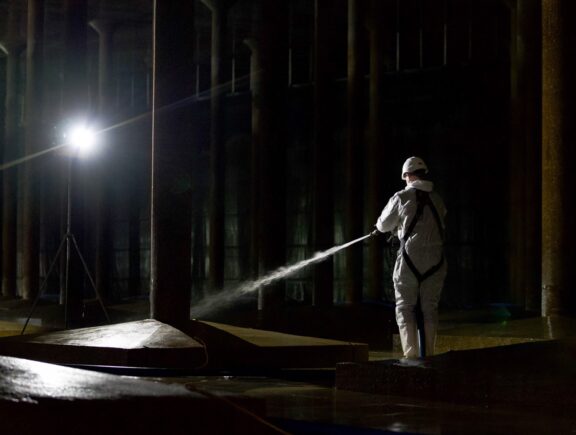To comply with the HSE Confined Space ACOP, the project involved installing a new, larger manway. This modification enabled the team to grit blast the internal surfaces and conduct a thorough inspection.
The team prepared the vessel by removing level gauges and telemetry, and blocking inlet and outlet. As the vessel was located inside the control room building, the team employed welding curtains and fume extraction to protect the operational equipment.
After a design process, a new 600mm manway hole was cut. Due to the height of the vessel the work had to be completed in stages, blasting the ground level first, then installing access scaffolding to work on the higher substrate.
Initial inspection of the internal surfaces revealed the vessel to be in good condition, with no excess pitting of the metal, and therefore no ‘buttering’ welding work was required. The vessel passed a visual inspection by an external moderator before a new manway hatch was welded into place and subjected to a MPI (Magnetic Particle Inspection) to ensure weld integrity.
A hydrostatic pressure test revealed that the old manway was not sound enough to pass the second phase of testing. Therefore the old manway was removed, infilled with a blanking plate and welded, ensuring integrity with an MPI. The external moderator visited the site again to complete pressure testing and the vessel passed.
The vessel underwent a further grit blast to prepare for the application of DWI-approved internal coatings. This took place under atmosphere control with stringent quality checks throughout to confirm the product was applied according to the manufacturer’s IfUs. Spark testing was carried out to identify any areas of inadequate coating which were patched before completion.
After a seven-day curing period, the vessel was cleaned throughout, the external surfaces were painted, and the internal surfaces were chlorinated. It was returned to the client to be put into service until its next routine inspection.
